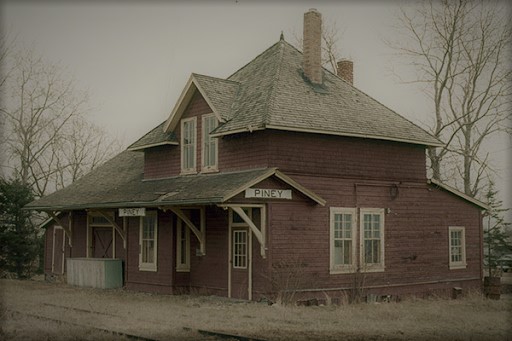
The Piney train station was formally opened on June 16, 1907. Photo: Manitoba Historical Society
At the turn of the century in 1900, several Icelandic families settled in the Pine Valley in southeastern Manitoba. This valley and its immediate surroundings were forested, so people talked about logging and timber processing. Timber was marketed in Winnipeg, and a railroad was needed. One railroad, CNR (Canadian Northern Railway), was laid into the district around 1900. About 300 people were hired to work day and night. They used axes, manual labor, shovels and wheelbarrows for the work. Wherever a railroad was laid on the Canadian plains, a train station was needed where the locomotive was cared for and the farmer’s crops in the immediate area were put on board. Necessities were brought to the station from nearby cities and towns. When it became clear where the railway was to be laid, the railway company, in consultation with the local government, began to consider a train station. Once it was clear where it would be built, other stores and services sprang up near the station, gradually forming a small village.
Piney: Icelandic settlers in the valley seized the opportunity, they were the most populous ethnic group in this area in the first decades of the 20th century. Magnús Jónsson from Miklaholtshreppur in Snæfellsnes moved from Roseau, Minnesota and took land in Pine Valley. They lived there for 16 years but moved to the village where Magnús started selling timber (table wood sales). There he built a good house and lived there for a long time. He was very involved in local work and took up school matters. Oddur Hansson Hjaltalín came west from Mýrasýsla in 1899 and after a few years in Winnipeg, took land in the valley in 1906 but moved to the village after a few years. There he worked as a carpenter and was the school’s caretaker. Magnús Davíðsson from Önundarfjörður in Ísafjarðarsýsla came west in 1888 and, after trying his hand in various places in Manitoba and Saskatchewan, moved to Pine Valley at the turn of the century. His land was not far from the village and he began postal delivery service around 1910. Jón Stefánsson from Urriðavatn in Fell came to the settlement in 1905, took land, but did not move there and instead opened a shop in the village and ran it for several years.
